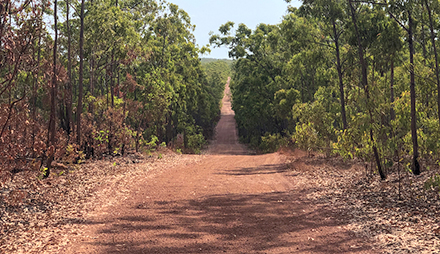A new research project managed by Forest and Wood Products Australia will investigate the potential for commercial Indigenous forestry in the Northern Territory’s East Arnhem Land. The project aims to support the Traditional Owners to facilitate a sustainable forest-based livelihood and will provide the necessary insights to underpin the long-term commercial viability of forestry in the area. Source: Timberbiz
Funded jointly by industry and the Australian Government, the research project is part of FWPA’s voluntary matched funding program, which offers up to 1:1 matched funding against the cash commitments of external investors in support of project proposals.
Since launching in 2016 more than $12m has been allocated as part of the program. Woodchips have been successfully exported from the Tiwi Islands on a regular basis since late 2015, with the project becoming a significant employer in the remote region.
“FWPA is very proud to be able to facilitate this important project through our matched funding program, which will support Indigenous forestry in northern Australia,” Ric Sinclair, Managing Director at FWPA said.
The project is being delivered by the University of the Sunshine Coast (USC), with a number of partner entities led by Developing East Arnhem Limited (DEAL), an independent not-for-profit company that aims to drive economic development in East Arnhem, promoting the resilience of the region and opportunity for its people.
DEAL and USC will work with the Gumatj Corporation, the National Indigenous Australians Agency, Aboriginal land management organisations, a range of Northern Territory government bodies and other Aboriginal workforce development organisations in the region.
Dr Chris Lafferty, Research and Development Manager at FWPA said the project provides a great example of how voluntary matching supports projects that might not otherwise have been able to progress.
“The voluntary matching agreement allows for the support of research projects in smaller markets, that is not necessarily driven by the promise of big returns or wider industry inclusion,” Dr Lafferty said.
“But by supporting emerging markets through R&D we can help place them in a strong position to thrive over time and grow into much more significant sections of the industry.”
Jordy Bowman, CEO at DEAL, said forestry has the potential to support Indigenous communities to use their land for employment and economic benefit, alongside cultural purposes.
“The project will support Traditional Owners to recognise the commercial assets they have on their land. It will provide an evidence base that enables them to make informed decisions,” Ms Bowman said.
Balapalu Yunupingu, Gumatj elder and director of Gumatj Corporation, said the project was about bringing together old and new ways.
“It’s about developing partnerships for our future, working together and learning from the past, and creating sustainable jobs for our young people,” Balapalu said.
AFPA CEO Ross Hampton said that collaborative projects like this, directly involving the communities, which would be the benefactors, was the way to get real, sustainable results.
“These regions in the top end of Australia have real potential for renewable forest products industries,” Mr Hampton said.
“Close to developing markets in Northern Australia and South East Asia, they can both meet a growing demand, and help indigenous communities set and meet the goals they want to achieve for economic development and financial independence.
“This project is about indigenous Australians managing their native forests and it shows there are real opportunities for industry to back growth research projects, as they know the Federal and State governments are also supporting it financially by matched funds,” Mr Hampton said.
“However, there is only so much direct support our renewable forest industries can give to projects like these due to the current arbitrary cap on matched funding contributions for eligible research and development, and I call on the Federal government to look at increasing, or removing the cap, to let more matched investment flow,” Mr Hampton said.
The Indigenous Commercial Forestry Opportunities: East Arnhem, northern Australia project is funded by DEAL, the Gumatj Corporation, the National Indigenous Australians Agency (NIAA), and the NT Government, with matched funding from the Australian Government, as part of its voluntary matching agreement with FWPA. In addition, The University of the Sunshine Coast is making a significant investment in the project.








